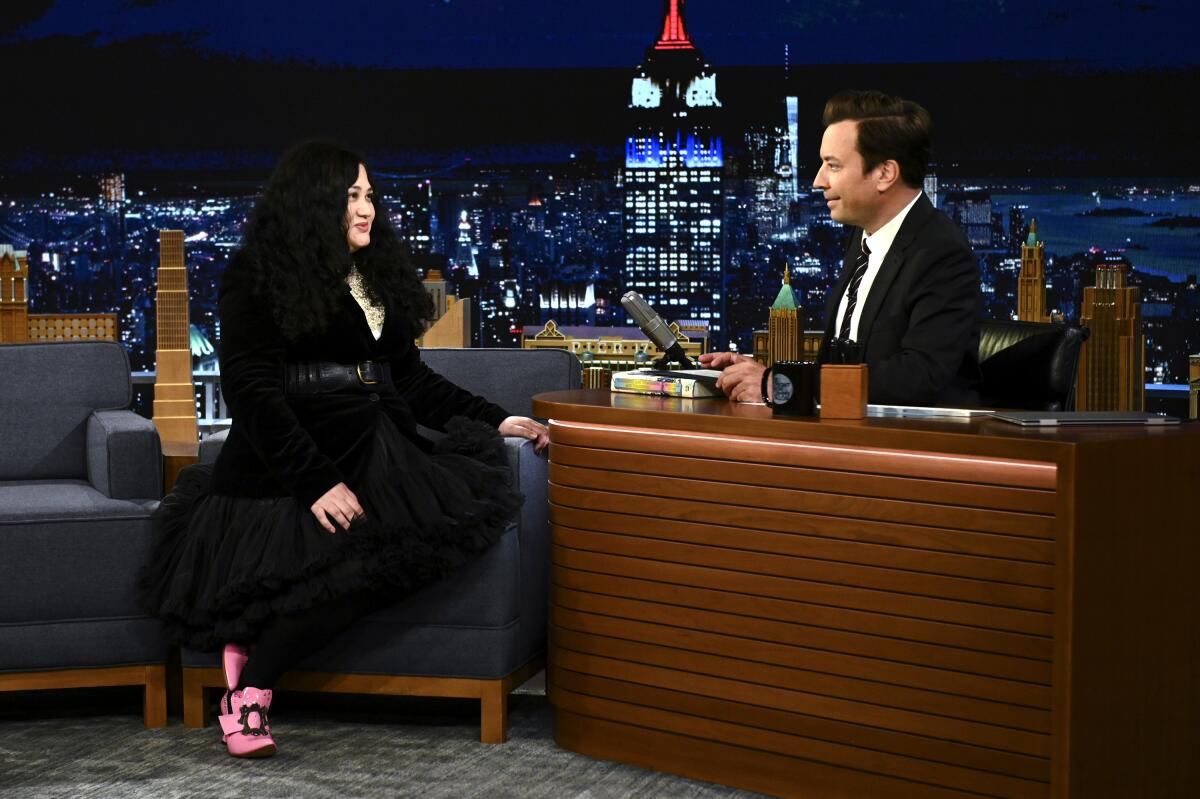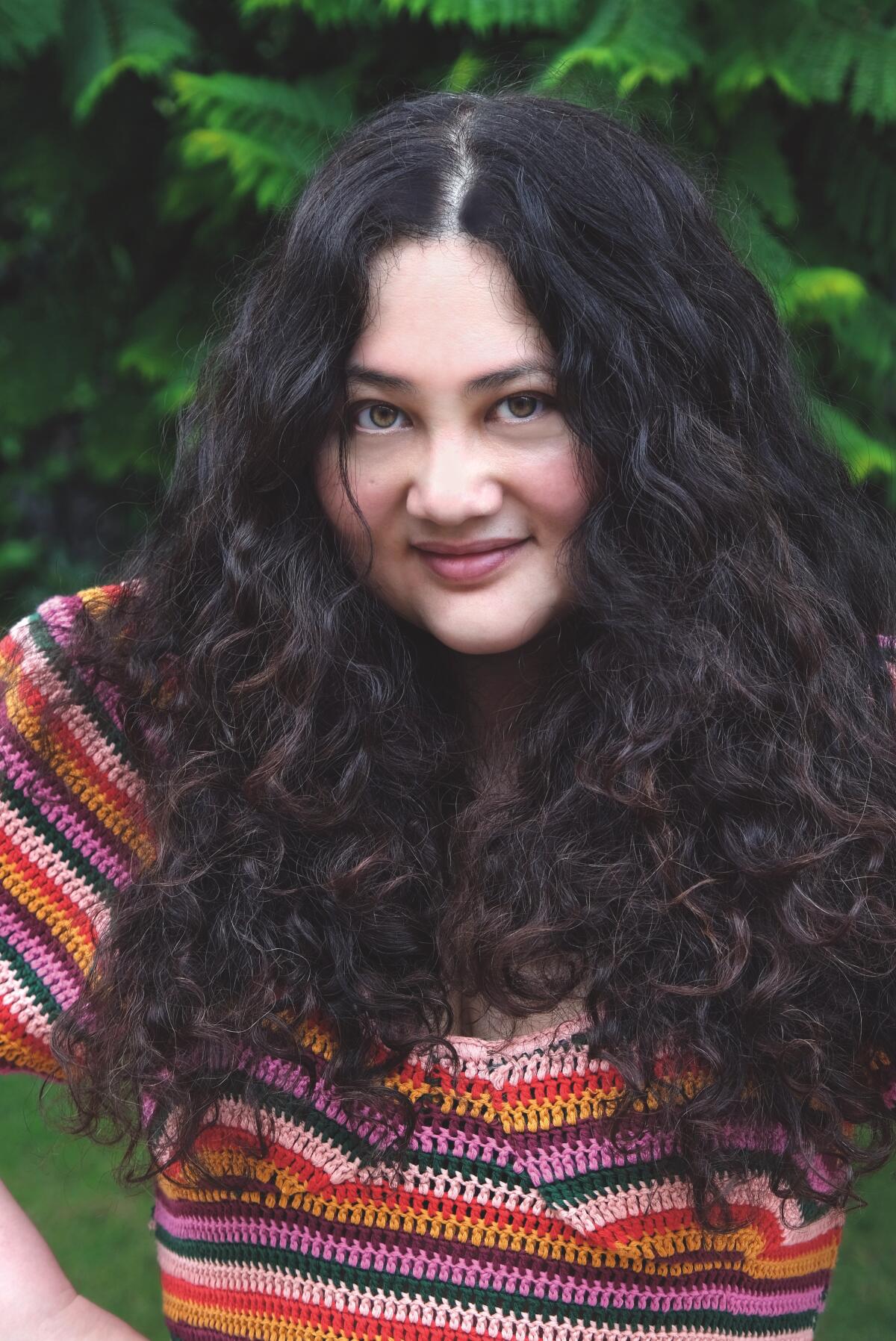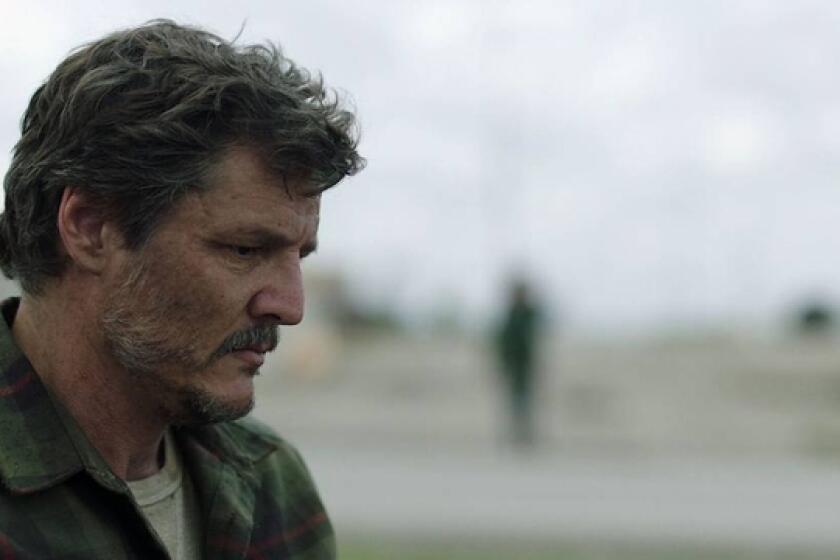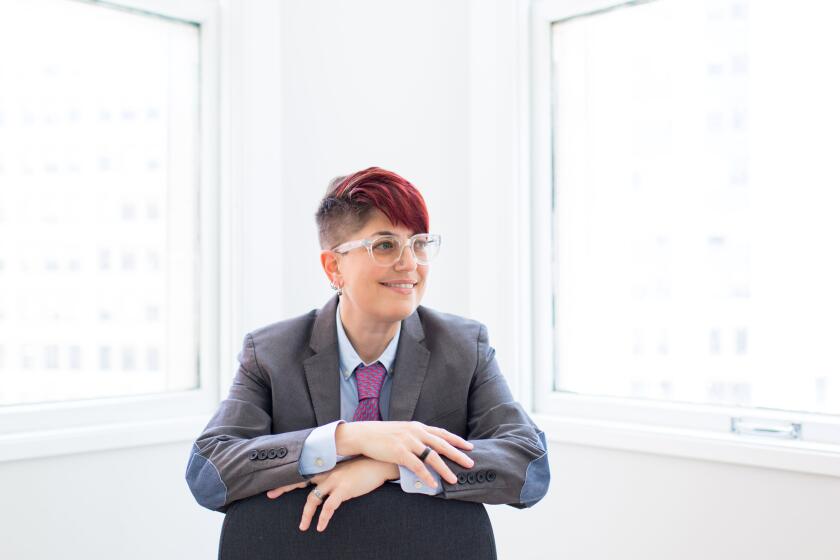Gabrielle Zevin takes us inside her video game-inspired, juggernaut bestseller

Bestselling novelist Gabrielle Zevin joins the L.A. Times Book Club April 22 to discuss ‘Tomorrow and Tomorrow and Tomorrow’ at the Festival of Books.
- Share via
There are books that define a generation, “On the Road,” or “Infinite Jest,” arguably (and endlessly so). But what about a micro-generation?
Gabrielle Zevin’s “Tomorrow, and Tomorrow, and Tomorrow” might be the first love letter to the pocket demographic between Generation X and millennials. Born between 1977 and 1983, they call themselves xennials or the Oregon Trail Generation, named for the 1985 version of the educational game many children encountered on a clunky Apple IIE.
The author wrote her 10th novel, which tracks the collaborative, competitive friendship of video game developers Sam Masur and Sadie Green, with her peers in mind, and it has exploded into a publishing supernova.
Even with her wealth of experience, Zevin is still shell-shocked by the clamoring reception: “Tomorrow, and Tomorrow, and Tomorrow” has been a fixture on bestseller lists since it came out last summer, a Jimmy Fallon Book Club pick, Amazon’s No. 1 book of the year, and so on. This spring, she left her Beverly Grove home for readings in Spain and Germany. Then she’s off on another domestic tour, a jaunt to Australia and back to her adopted home city, where she’ll join the L.A. Times Book Club April 22 at the Festival of Books.

“I am finding,” Zevin says, “that the person who is the extrovert who goes out and promotes books has very little to do with the introvert who writes them.”
Or writes screenplays. When she lands again, she’ll return to adapting “Tomorrow” for Paramount, which nabbed the rights for $2 million in a frenetic auction more than a year before the book’s publication. It’s not her first: Other screenplays include “Conversations With Other Women,” and “The Storied Life of A.J. Fikry,” based on her 2014 novel, an ode to bookshops. Both films were directed by Hans Canosa, Zevin’s longtime partner.
Join our community book club. Our mission is to get Southern California reading and talking.
When she’s not figuring out how to condense a 500-page novel into two or so hours, maybe she’ll sleep or go mute for days at a time. Zevin, 45, with her penetrating gaze and her shock of ripply black hair, doesn’t look tired but oh, she is. “Come July, a year from when the book came out, I’m calling it. I’m not traveling anymore. I don’t really want to talk anymore,” she said with a laugh. It’s not you, dear readers. “I get sick of myself, to be quite honest.”
Her legions of fans feel differently. “Tomorrow” has been fueled by word of mouth, and attrition. After appearing on numerous best-of lists in December, Zevin says, “It effectively wore down people who were like, ‘I don’t want to read a video game novel. What does that have to do with me?’” Everything, it turns out, but especially if you’ve ever felt the seductive pull of the creative process, or the ache of potentially losing a lifelong friendship, or the hardships of disability or marginalization, to name a few of the strands that tangle in captivating ways in “Tomorrow.”

Sam and Sadie meet as ‘80s children who’ve died countless deaths from dysentery playing “The Oregon Trail.” They lose touch, then cross paths again as ambitious college students in the early ‘90s. Both are (still) obsessed with video games. Sadie has already designed a couple of high-minded experiments at the Massachusetts Institute of Technology in a class taught by legendary programmer/designer Dov Mizrah, one of the handful of difficult geniuses who weave in and out of this story that spans some 30 years.
After Sam sees the potential in one of Sadie’s early attempts, he buttonholes her to collaborate with him. This invitation to play kicks off a creative relationship built on admiration, frustration, resentment and love. Their friend and eventual colleague Marx is the charming diplomat in their mostly unspoken standoffs.
For Zevin, the history of video games was a way to talk about how technology has altered life on every scale, including the way we get directions, how we date and what we do when we wait in line at the pharmacy. Gingerly lifting her iPhone off her desk like it’s a slobbery dog toy, she says, “We’re all aware of these things burning a hole in our pocket, but there’s not very many visual cues for that change.”
Enter the Pixelated Screen. In our conversation, Zevin cites two examples from the timeline of video games. There’s the primitive beginnings: Pong, released by Atari in 1972, was little more than two lines and two dots. Then more recently, one of Zevin’s favorites, “The Last of Us,” is a gruesome survivalist game released in 2013 that looks like a movie (and eventually became a HBO series starring Pedro Pascal and Bella Ramsey). The visual difference between the two games alone shows a staggering evolution.
‘The Last of Us,’ HBO’s new prestige drama based on the video game, stands apart from other zombie fare despite a shared post-apocalyptic premise.
The capsule history “made video games the perfect metaphor,” Zevin said, “for my own kind of artistic career, and what it was like to be a person in these last three decades.” Contrary to what the hold-outs to “Tomorrow” might have thought, the subject is relevant to all of us, judging by spending habits alone. Last year, U.S. consumers racked up $56.5 billion in video game sales. In 2020, at the height of the pandemic, the global video game industry made more than film and sports combined.
Then there’s the case for video games as a legitimate art form. Zevin won’t let anyone walk away from her meticulously researched world without recognizing the sheer talent and imagination that the best developers put into their creations. Her descriptions of Sam and Sadie making “Ichigo,” their first game that would cement their careers, is visceral. When his fingertips bleed at the keyboard, Sam applies bandages, only to remove the impediments. “He was accustomed to discomforts far greater,” she writes, referencing Sam’s crushed foot from an accident, one of the many ways that the book comments on our relationship to our physical forms, and our avatars.
As for her own avatar, Zevin has let her authorial mask, which she found useful in her earlier fictions, slip down more than ever before. “Before I wrote this book, I’d never made anyone half-Jewish and half-Korean like I am and like Sam is. Part of that is because, at this point in my life, I understand more about what that is,” and how to write about it.
Although the city she grew up in, Boca Raton, Fla., doesn’t appear in “Tomorrow,” Zevin set a portion of the book in Cambridge with Sam attending Harvard, as Zevin did in the ‘90s. But she needed distance first. Had she written about Harvard right after graduation, “it would’ve been filled with resentment or disappointment or all these things that weren’t really about Harvard but just about me.” Instead, as she wrote “Tomorrow” during the pandemic lockdown, she felt a “sensual longing” for Cambridge, Tokyo and other places she’d once been but couldn’t revisit, including early-aughts Silver Lake where she lived close to the bygone Happy Foot Sad Foot sign.
Like Zevin, the characters in “Tomorrow” gain new insights from the benefit of time and maturity. After bickering with a female classmate early in the book, Sadie laments how life at MIT, as one of the few women, is an isolating experience. “It was as if being a woman was a disease that you didn’t wish to catch. As long as you didn’t associate with the other women, you could imply to the majority, the men: ‘I’m not like those other ones.’‘”
Novelist and science journalist Annalee Newitz brings ‘The Terraformers’ to the L.A. Times Book Club March 28.
Decades later, near the end of the book, Sadie talks with Sam about the younger generation. She’s in awe and slightly exasperated at how they don’t hide their traumas but ground them as a centerpiece of their creativity. “Their standards are higher; they call b— on so much of the sexism and racism that I, at least, just lived with.”
Readers may marvel too at how much we’ve all changed. When the main character of “Ichigo,” which Sadie and Sam originally conceived as a nonbinary child, is quickly remade into a little boy, it is to be expected. It’s the late ‘90s and the world wasn’t ready. Now, it is (much more than before, anyway).
“Tomorrow, and Tomorrow, and Tomorrow” is not a multiverse novel, but its many overlapping layers of time and experience remind us of all we’ve won on the trail so far.
Book club: Gabrielle Zevin
What: The L.A. Times Book Club is reading “Tomorrow, and Tomorrow, and Tomorrow” during April. Author Gabrielle Zevin joins us for a conversation with Times Assistant Managing Editor Samantha Melbourneweaver at the Festival of Books.
When: April 22 at 1:45 p.m.
Where: Norris Theatre at USC
Info: Ticket info and the full festival schedule is online.
Book club newsletter: Join our community book club and get the latest news, stories and events: latimes.com/bookclub
More to Read
Sign up for our Book Club newsletter
Get the latest news, events and more from the Los Angeles Times Book Club, and help us get L.A. reading and talking.
You may occasionally receive promotional content from the Los Angeles Times.












